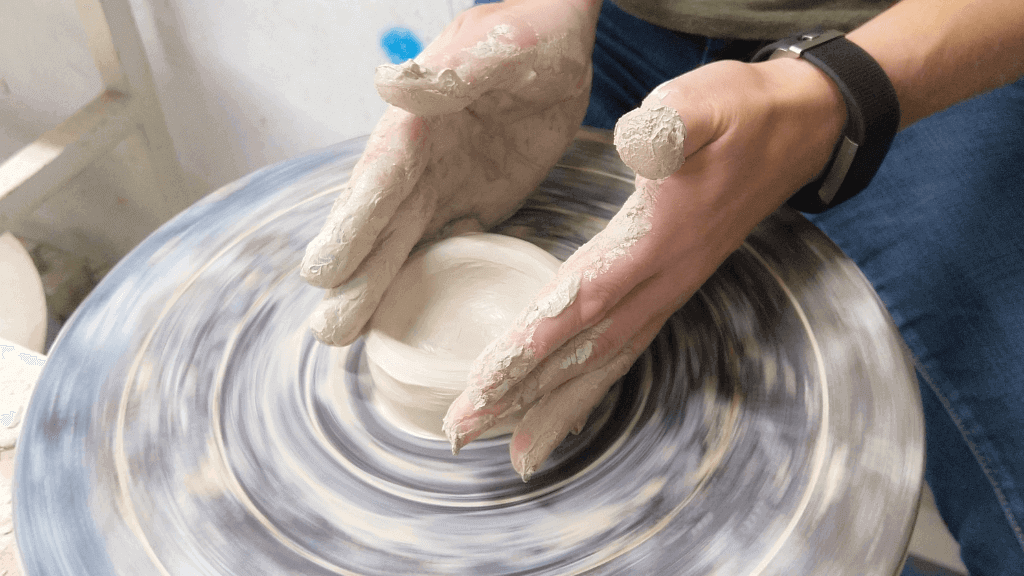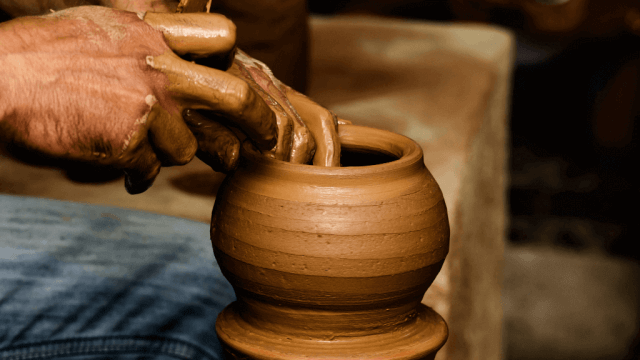Pottery glaze can stain clothes, especially light-colored clothing. However, a good wash can remove glaze from dark-colored clothing. Darker clays like black clay and terracotta can also be challenging to wash off. To avoid staining your clothes, it is recommended to wear an apron when painting and dipping or use a Leatherbak Splash Shield when dipping. If you get ceramic glaze on your clothes, certain darker clays might require treatment to remove the stains.
What type of pottery glaze is most likely to stain clothes?
Stains on pottery can occur due to seepage of moisture through small cracks in the glaze, often called crazing. However, some glazes may also contain ceramic stains that can cause discoloration. It is unclear which type of pottery glaze will most likely stain clothes.
Can the use of certain detergents help remove pottery glaze stains from clothes?
While there are many ways to remove clay stains from clothes, it is still being determined whether certain detergents can help remove pottery glaze stains. Some sources suggest using a paste made of ammonia and laundry detergent powder, while others recommend pre-treating the fabric with detergents before washing. However, there may be more effective methods for removing pottery glaze stains specifically. Other sources suggest using vinegar and salt to lift stubborn clay stains from un-washable surfaces or removing stains from under the glaze on china. It is best to consult a professional cleaner or follow the manufacturer’s instructions for removing pottery glaze stains from clothes.
How long does it take for pottery glaze to dry on clothes, and is there a window during which the stain can be removed easily?
Pottery glaze can take overnight to dry. It is still being determined whether there is a window during which the stain can be removed easily. However, eliminating glaze from pottery before firing it requires time and patience. If you are concerned about the safety of commercial glazes, slips, or stains, you should call the manufacturer. Pottery-making has many hazards, including carpel tunnel syndrome from throwing on a potter’s wheel for long periods. Lead has long been used in ceramic ware, glazes, and decorations. Lead is toxic and can affect people of any age.
Are there any precautions or measures that can be taken to prevent pottery glaze from staining clothes during the pottery-making process?
Yes, some precautions can be taken to prevent pottery glaze from staining clothes during the pottery-making process. Some suggestions include:
• Scrubbing your hands thoroughly after glazing
• Using a respirator when handling toxic liquids
• Using kiln wash, kiln cookies, waxing, stilts, or kiln shelf paper to protect your shelf and pottery from melting glaze
It is important to note that handling glazes containing lead can be harmful to human health if dust or fumes containing lead are swallowed or breathed in. Therefore, taking necessary precautions when working with ceramics and pottery is essential.
What alternative materials can make pottery that doesn’t stain clothes as easily as glaze?
Several alternatives to glaze can be used to decorate pottery. Some suggestions include:
• Alumina oxide
• Spray paint, Rub and Buff, or decoupage tissue paper
• A glaze-like alternative to ceramic glaze
• Air-dry clay
It is important to note that some materials used in glazes may be toxic and should be disposed of properly.











